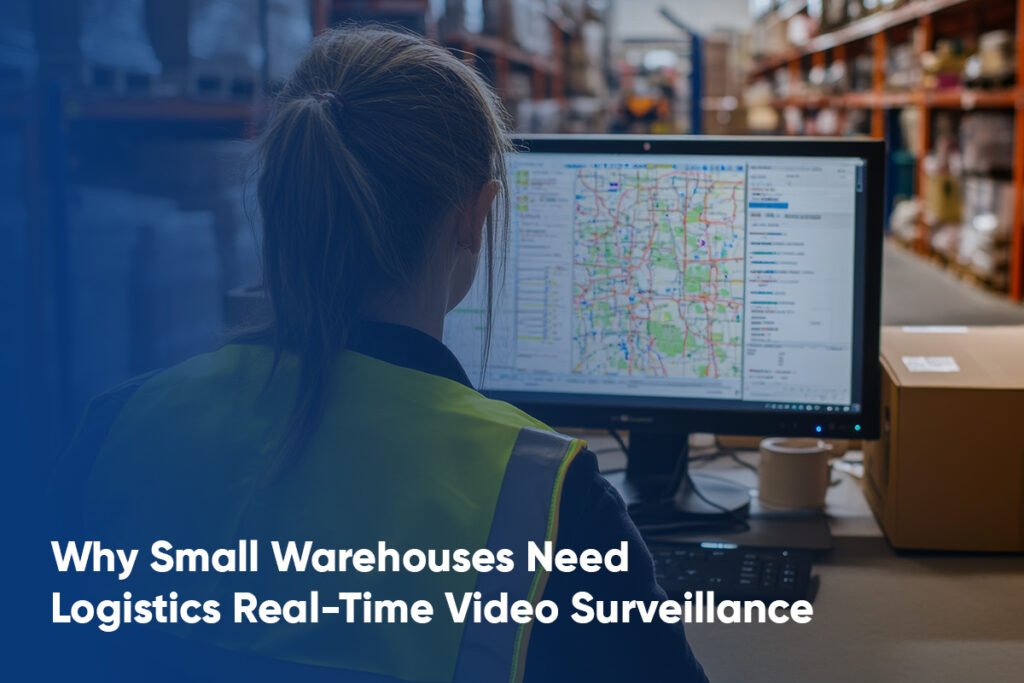Step into a small warehouse on any given day, and you’ll notice the pace. Boxes stacked high, workers moving quickly, trucks backing up to the dock. It may not seem like a big operation from the outside, but anyone running one knows the truth. Even small spaces are packed with activity, and with activity comes risk.
For years, smaller facilities thought security tech was only for the giants, the big distribution hubs with endless square footage. That’s not the case anymore. Smarter systems have become affordable and practical, and they can make a big difference where resources are limited. A small warehouse might not have dozens of staff or expensive equipment, but it still needs the right protection. Here’s why:
Small Doesn’t Mean Simple
It’s easy to assume a smaller footprint is easier to manage. Fewer staff, fewer deliveries, less to worry about. In reality, that size makes it tricky. Fewer people means fewer eyes. Staff often double up on tasks, and mistakes slip through. A delivery was left unattended. A door unlocked for “just a few minutes.” A stranger slipping into the wrong area.
That’s why more owners are investing in logistics real-time video surveillance. It allows them to keep track of what’s happening across the floor without being there in person. Instead of finding out about a problem later, they can see it as it unfolds–for a small warehouse, where every product counts, that matters.
The Human Side of Risk
People are dedicated, but people are human. Long shifts, pressure to move quickly, or just plain distraction all add up. Corners get cut. Safety steps get skipped. A driver might wander into a restricted space. An employee props a fire exit open because it’s easier than walking around.
With logistics remote surveillance, managers don’t have to rely purely on trust or presence. They can pull up live feeds from home, the road, or another site. The knowledge that the system is watching tends to shift behavior, too. Staff know they’re accountable, which usually leads to better habits and fewer slip-ups.
Preventing Problems Instead of Reviewing Them
Theft is always a concern, but small warehouses face other headaches too. Accidents can be just as costly. Think of a pallet blocking an emergency exit or a forklift operator cutting a corner under pressure. These small lapses can lead to downtime, fines, or worse.
That’s where logistics live video monitoring becomes useful. It isn’t just recording; it’s alerting. If something looks off, supervisors get notified in real time. That means acting before things spiral, a quick call to move that pallet, or sending someone to check on a vehicle sitting idle too long. It turns surveillance into prevention, not just a record for later.
Counting the Savings
Budgets at small warehouses are always tight. A single loss, whether from theft or damaged goods, hurts more than it would in a giant operation. Security systems save money not just by preventing theft, but by cutting down accidents and avoiding downtime.
A reliable remote monitoring system also gives insights beyond security. Reviewing footage shows where delays happen, where space is misused, and where staff spend too much time. Those small changes in workflow add up, trimming costs over time. For a small business, that kind of efficiency can make a real difference.
Trust Matters
Clients want reassurance. They want to know their stock is handled properly, whether the warehouse is massive or modest. A facility with visible, modern monitoring sends the right message: goods are taken seriously.
And so do the workers. Your stress levels go down when you are in a safe place that is well-monitored. People are more likely to finish their task when they believe there are fewer hazards and that problems won’t be ignored. That sense of safety makes individuals feel better and keeps them from leaving. Replacing staff is expensive; keeping them happy is cheaper.
Smarter Tech, Smarter Scaling
The best part of newer systems is the analytics. Old cameras recorded everything, but they left managers with too much video. AI now helps with filtering. It points out strange behavior, cuts down on false alerts, and focuses on what’s really important.
For a small warehouse, that’s invaluable. You don’t have the manpower to comb through endless recordings. The system acts as the extra set of eyes you can’t afford to hire. And when your operation grows, the tech grows with it. Scaling up doesn’t mean starting from scratch; it means adding more cameras, not more guards.
Wrapping Up
Small warehouses may not look like much compared to sprawling logistics hubs, but they face the same risks. The impact of those risks is often sharper because smaller businesses don’t have deep pockets to cover repeated losses.
That’s why it’s important to have better monitoring. Controlled locations are those that are hard to get into because they have live cameras, remote access, and live monitoring. There are more benefits than just safety. They include fewer accidents, procedures that are simpler, and increased trust from both consumers and staff.Intellve provides real-world solutions for owners who want that degree of supervision without going over budget. Their systems combine live video, analytics, and remote access to keep even the smallest warehouses secure. Visit Intellve to find out how smart monitoring can keep your warehouse safe, functioning efficiently, and ready for anything.



